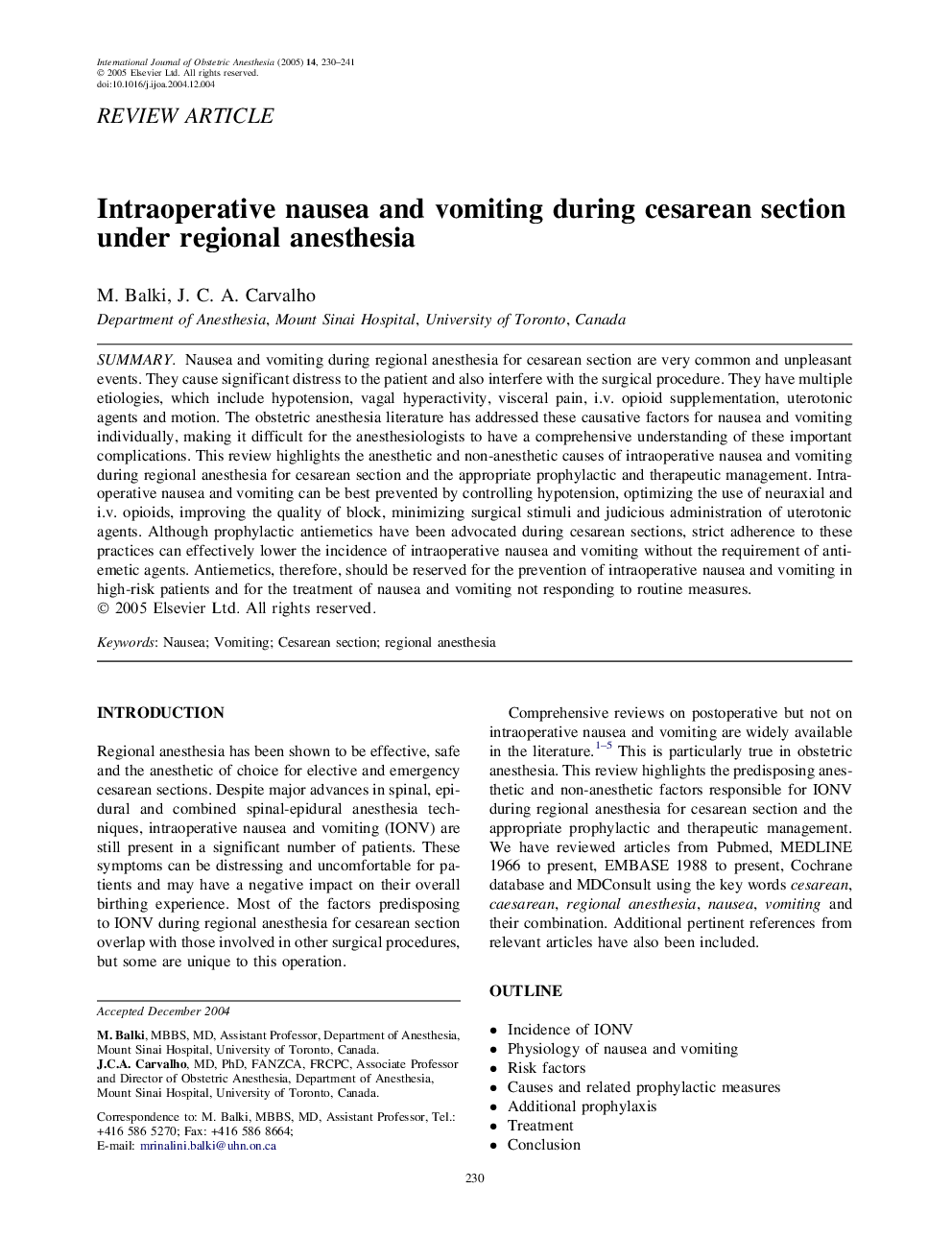| Article ID | Journal | Published Year | Pages | File Type |
|---|---|---|---|---|
| 9932995 | International Journal of Obstetric Anesthesia | 2005 | 12 Pages |
Abstract
Nausea and vomiting during regional anesthesia for cesarean section are very common and unpleasant events. They cause significant distress to the patient and also interfere with the surgical procedure. They have multiple etiologies, which include hypotension, vagal hyperactivity, visceral pain, i.v. opioid supplementation, uterotonic agents and motion. The obstetric anesthesia literature has addressed these causative factors for nausea and vomiting individually, making it difficult for the anesthesiologists to have a comprehensive understanding of these important complications. This review highlights the anesthetic and non-anesthetic causes of intraoperative nausea and vomiting during regional anesthesia for cesarean section and the appropriate prophylactic and therapeutic management. Intraoperative nausea and vomiting can be best prevented by controlling hypotension, optimizing the use of neuraxial and i.v. opioids, improving the quality of block, minimizing surgical stimuli and judicious administration of uterotonic agents. Although prophylactic antiemetics have been advocated during cesarean sections, strict adherence to these practices can effectively lower the incidence of intraoperative nausea and vomiting without the requirement of antiemetic agents. Antiemetics, therefore, should be reserved for the prevention of intraoperative nausea and vomiting in high-risk patients and for the treatment of nausea and vomiting not responding to routine measures.
Related Topics
Health Sciences
Medicine and Dentistry
Anesthesiology and Pain Medicine
Authors
M. Balki, J.C.A. Carvalho,
